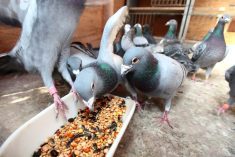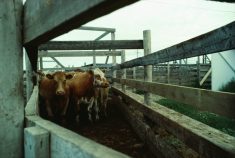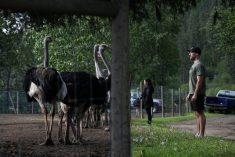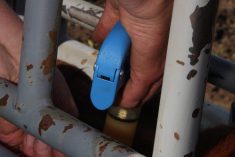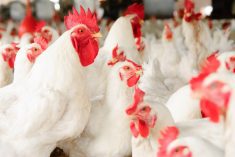Federal officials tracing out the herdmates of Canada’s 19th domestic case of BSE expect to have their final report on the case ready in late fall.
Confirmed Feb. 11 as Canada’s first domestic case of the brain-wasting bovine disease since 2011, Case 19 was born in 2009 on the same northern Alberta farm as Case 17, a cow born in 2004 and confirmed with BSE in 2010.
The Canadian Food Inspection Agency’s on-farm and feed investigations into Case 19 are now “complete from an information-gathering perspective,” the Canadian Cattlemen’s Association said in a statement Monday.
Read Also

Alberta crop conditions improve: report
Varied precipitation and warm temperatures were generally beneficial for crop development across Alberta during the week ended July 8, according to the latest provincial crop report released July 11.
The CFIA has previously estimated Case 19’s birth cohort — animals born on the same farm between March 2008 and March 2010 — includes an estimated 750 animals. The feed cohort is expected to be far larger, including any surviving cattle fed on the farm in between Cases 17 and 19.
Just over 70 per cent of the birth cohort animals have been identified to date — and of that 70 per cent, about 14 per cent of those have been traced to live animals, the CCA said.
The CFIA and Agriculture and Agri-Food Canada are still working with trading partners who haven’t yet lifted temporary restrictions put in place when Case 19 was announced, the CCA said.
CFIA, the association said, has “actively engaged these markets” — such as South Korea, Taiwan, Indonesia, Peru and Belarus — and kept them up to date as the investigation progresses.
Case 19 — Canada’s first to be born after the “enhanced” federal feed ban took effect in 2007 — didn’t affect Canada’s status as a “controlled risk” country for BSE but posed a setback in its efforts to level up to “negligible risk.”
By OIE standards, a country’s youngest case of BSE must have been born 11 years before “negligible risk” status can be considered. — AGCanada.com Network








